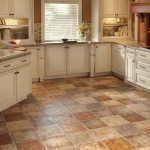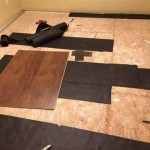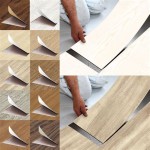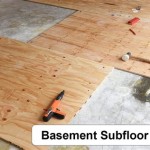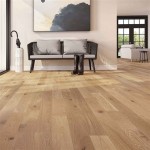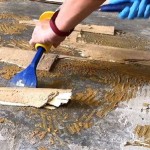Can You Use Carpet Tape On Wood Floors For Padding?
The question of whether carpet tape can be used on wood floors for padding purposes is complex, requiring careful consideration of tape composition, floor finish, intended use, and potential long-term effects. While seemingly a convenient solution for securing rugs or providing a temporary cushion, the application of carpet tape directly to wood flooring can present a range of problems. This article will explore the issues involved and offer a balanced perspective on this practice.
Carpet tape is designed primarily for adhering carpets to subfloors, often made of concrete or plywood. The adhesives used in these tapes are formulated to create a strong bond, which, while desirable for carpet installation, can be detrimental to the delicate surface of a wood floor. Wood floors are particularly susceptible to damage from aggressive adhesives, especially those with a glossy finish or those made of softer wood species.
Many individuals seek to use carpet tape as a quick fix for securing area rugs to hardwood. The allure is that it's perceived to be a straightforward, inexpensive alternative to more specialized rug pads or professional installation. However, the immediate convenience may lead to more significant, costly problems down the line.
Understanding Carpet Tape Composition and Adhesive Properties
Carpet tape generally consists of a carrier, typically a fabric or film, coated with adhesive on both sides. The adhesive composition varies between manufacturers and can range from rubber-based to acrylic-based. Rubber-based adhesives tend to have a more aggressive initial tack and can leave a residue that is difficult to remove. Acrylic-based adhesives are often considered less aggressive but may still cause damage to certain wood finishes.
The core issue stems from the adhesive's interaction with the wood floor's finish. Most wood floors are coated with a protective layer, such as polyurethane, varnish, or lacquer. This finish is designed to protect the wood from scratches, stains, and moisture. However, the adhesive in carpet tape can chemically react with these finishes, causing discoloration, softening, or even complete removal of the protective layer. When the tape is eventually removed, it can pull away pieces of the finish, leaving behind a damaged and unsightly surface.
Furthermore, the adhesive residue left behind after tape removal can be incredibly stubborn to eliminate. Many commonly used cleaning agents can further damage the wood finish, making the removal process even more challenging. Solvents that are effective at dissolving the adhesive may also strip the finish or penetrate the wood, leading to permanent damage.
The carrier material of the tape also plays a role. Some tapes have a very rigid carrier, which can create concentrated pressure points on the wood floor. Over time, this can lead to indentations or scratches, particularly under heavy furniture or foot traffic. Other tapes have a more flexible carrier, but this flexibility often comes at the expense of adhesive strength, making them less effective at securing rugs.
Potential Damage to Wood Floor Finishes
The potential for damage to wood floor finishes is the primary reason why using carpet tape directly on wood is generally not recommended. The type of damage can vary depending on the type of finish used on the floor and the specific adhesive in the tape. As previously mentioned, finishes like polyurethane, varnish, and lacquer are all susceptible to damage from the chemicals in carpet tape adhesive.
One common type of damage is discoloration. The adhesive can interact with the finish, causing it to turn yellow or brown. This discoloration can be particularly noticeable on lighter-colored wood floors. Another type of damage is softening of the finish. The adhesive can break down the finish, making it more susceptible to scratches and wear.
In the most severe cases, the adhesive can completely remove the finish from the wood floor. This can leave the wood exposed and vulnerable to damage from moisture, stains, and scratches. Repairing this type of damage often requires refinishing the entire floor, which can be a costly and time-consuming process.
Even "residue-free" carpet tapes can pose a risk. While these tapes are designed to leave minimal residue, they may still contain chemicals that can interact with the wood finish. Moreover, the adhesive strength of residue-free tapes is often lower, making them less effective at securing rugs.
The age and condition of the wood floor also influence its susceptibility to damage. Older floors with worn finishes are more vulnerable to adhesive damage than newer floors with intact finishes. Similarly, floors that have been previously treated with harsh chemicals or cleaning agents may be more susceptible to damage.
Alternatives to Carpet Tape for Rug Padding and Securing
Given the risks associated with using carpet tape on wood floors, it is prudent to explore alternative methods for securing rugs and providing padding. Several safe and effective options are available that minimize the risk of damage to the floor finish.
One of the best alternatives is to use a high-quality rug pad specifically designed for wood floors. These pads are made from materials like felt, rubber, or a combination of both. They provide cushioning, prevent rugs from slipping, and protect the floor from scratches and wear. Look for pads that are labeled as "safe for wood floors" or "non-slip." Many of these pads feature a non-adhesive surface that grips the rug without adhering to the floor.
Another option is to use a non-slip rug underlay. These underlays are typically made from a thin layer of rubber or latex and are designed to be placed between the rug and the floor. They provide a good grip and prevent the rug from moving around. Unlike carpet tape, these underlays do not contain aggressive adhesives that can damage the floor finish.
For smaller rugs, you can consider using a rug gripper. These are small, reusable pads that attach to the corners of the rug and prevent it from slipping. They are easy to install and remove and do not leave any residue on the floor. While these might not provide padding they prevent slipping which can be a safer alternative.
In some cases, professional rug installation may be the best option. Professional installers use specialized techniques and materials to secure rugs to wood floors without causing damage. This is particularly recommended for large or expensive rugs, as the cost of professional installation is often less than the cost of repairing a damaged wood floor.
When selecting an alternative to carpet tape, it is crucial to consider the type of rug, the type of wood floor, and the level of traffic in the area. For example, a thick wool rug may require a thicker pad than a thin cotton rug. Similarly, a high-traffic area may require a more durable pad than a low-traffic area.
Ultimately, the decision of whether to use carpet tape on wood floors for padding depends on a careful assessment of the risks and benefits. While it may seem like a convenient solution, the potential for damage to the floor finish is significant. By exploring alternative methods and taking the time to select the right product, you can protect your wood floors and enjoy the beauty and comfort of your rugs for years to come.
It is also crucial to be wary of claims made by some manufacturers about "wood floor safe" carpet tapes. Always read the fine print and research the product thoroughly before applying it to your floors. Independent reviews and testimonials can provide valuable insights into the product's performance and potential for damage. Consider testing the tape in an inconspicuous area of the floor before applying it to the entire surface.

Pros And Cons Of Applying Rug Tape On Your Floors Carpets Rugpadusa

Rug Pads Grippers Carpet Tape 16 Pcs Non Slip For Hardwood Floors And Tiles Keep Your In Place

Pro Space 7 In X 1 2 0 08 Rug Pads Grippers Carpet Tape Non Slip For Hardwood Floors And Tiles 8 Pack Dtfhtp180b08 The Home

Types Features And Specific Uses Of Carpet Tape

Types Features And Specific Uses Of Carpet Tape

Pro Space 7 In X 1 2 0 08 Rug Pads Grippers Carpet Tape Non Slip For Hardwood Floors And Tiles 8 Pack Dtfhtp180w08 The Home

Rabenda 12 Pcs Rug Tape Non Slip Pads Grippers For Hardwood Floors And Tiles Review

How To Install Carpet Padding Better Than Your Neighborhood Pro

Rug Pads Grippers Carpet Tape 16 Pcs Non Slip For Hardwood Floors And Tiles Keep Your In Place

Rug Gripper Tape Carpet Double Sided For Hardwood Floor Non Slip Pads Area Rugs Binding Heavy Duty Stickers
See Also
